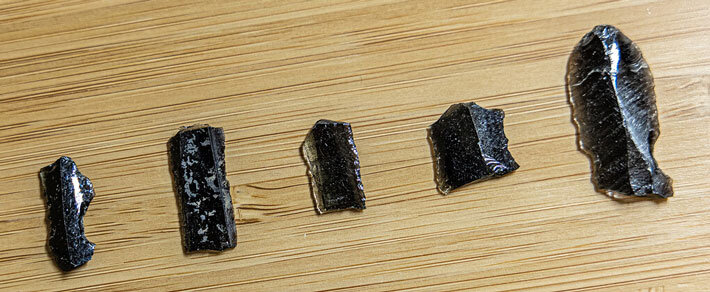Yale researchers analyze obsidian artifacts unearthed in Iran half a century ago

TEHRAN—A team of researchers from Yale University has analyzed hundreds of obsidian artifacts, which were unearthed in Iran some half a century ago.
According to a statement released by Yale University, researchers led by Ellery Frahm and Christian M. Carolus analyzed the chemical composition of more than 2,000 obsidian artifacts unearthed more than 50 years ago, Archaeology Magazine wrote on October 19.
The new study, conducted with portable X-ray fluorescence instruments, indicates that the obsidian came from seven separate sources, including Mount Nemrut, a now-dormant volcano located some 1,000 miles away from the settlements.
A computer model created with the data from the obsidian artifacts suggests that there were more Neolithic communities situated between the source volcanoes than had been previously thought, and the members of those communities were well connected.
Kept at the Yale Peabody Museum, the artifacts have been estimated to date some 12,000 years. They were discovered at the sites of Ali Kosh and Chagha Sefic, which are located in Iran’s Dehloran plain.
The first well-documented evidence of human habitation is in deposits from several excavated cave and rock-shelter sites, located mainly in the Zagros Mountains of western Iran and dated to Middle Paleolithic or Mousterian times (c. 100,000 BC).
From the Caspian in the northwest to Baluchistan in the southeast, the Iranian plateau extends for close to 2,000 km. It encompasses the greater part of Iran, Afghanistan, and Pakistan west of the Indus River, containing some 3,700,000 square kilometers. Despite being called a “plateau”, it is far from flat but contains several mountain ranges, the highest peak being Damavand in the Alborz mountain range at 5610 m, and the Dasht-e Loot east of Kerman in Central Iran, falling below 300 m.
The first well-documented evidence of human habitation is in deposits from several excavated cave and rock-shelter sites, located mainly in the Zagros Mountains of western Iran and dated to Middle Paleolithic or Mousterian times (c. 100,000 BC).
A 2019 study published by the Journal of Human Evolution suggests that Neanderthals were roaming over the Iranian Zagros mountain range between 40 to 70 thousand years ago. Neanderthals lived before and during the last Ice Age of the Pleistocene in some of the most unforgiving environments ever inhabited by humans. They developed a successful culture, with a complex stone tool technology, that was based on hunting, some scavenging, and local plant collection. Their survival during tens of thousands of years of the last glaciation is a remarkable testament to human adaptation.
AM
